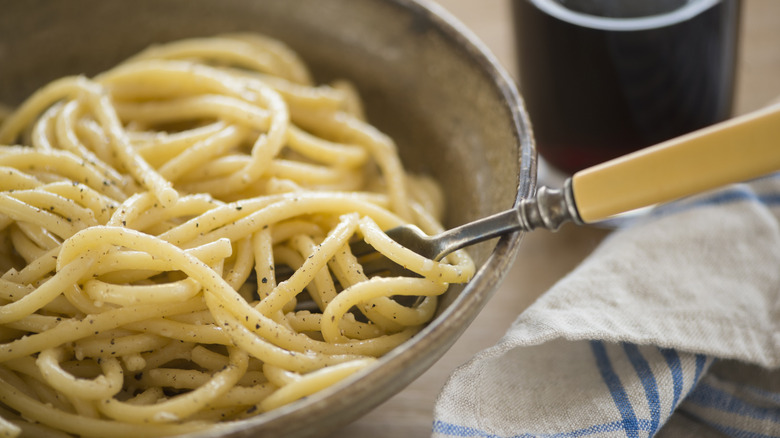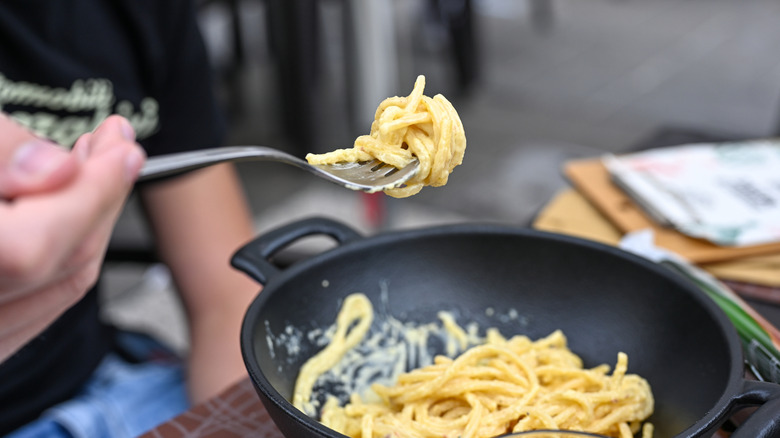How To Keep Your Cacio E Pepe Cheese Sauce From Breaking
One of the many joys of Italian cuisine is its simplicity, which yields complex, memorable, and infinitely flavorful dishes. This includes pasta, which never fall short of such simple ingredients and technique, as well as mouth-watering flavor.
However, when a recipe requires minimal ingredients and steps, it's essential to master each element to ensure that the final product is of utmost quality. Cacio e pepe is an easy pasta dish — and it's so good it can even zhuzh up roasted brussels sprouts — but with a few tips from Matthew Cutolo, third-generation Italian-American chef at Gargiulo's Restaurant in Coney Island, Brooklyn, your peppery and cheesy pasta will go from pretty good to bellissimo.
Cutolo says cacio e pepe sauce is delicate, because its texture depends on how well each component — the cheese, pasta water, and pepper — is emulsified. He outlined a few reasons why cacio e pepe sauce may break. "If the cheese is added to a piping-hot pan, it can clump instead of melting smoothly," he notes. Just as tomato-based pasta sauce is better after a low and slow simmer, it's important to fold in and melt the cheese slowly, which will result in an even, smooth sauce. As with the slow and steady heat, Cutolo also suggests adding the cheese in batches. "Cheese should be gradually mixed in with constant stirring to form a silky emulsion," he says.
Can other ingredients help the emulsification?
Pasta water is also an essential element, though it may be often overlooked. Cutolo says you need the perfect amount to achieve the right texture. "Starchy pasta water helps emulsify the cheese, but too little can cause a grainy texture," he says. At-home chefs can judge how much pasta water to add by the eye — just add it in increments until the texture is silky He also suggested giving both the pasta and the pasta water some time to cool before mixing in the cheese. The extra heat may cause the cheese to clump.
Although cornstarch can help stabilize sauces, such as when turned into a slurry, Cutolo suggests that using top-notch Pecorino Romano goes a long way toward improving your cacio e pepe sauce. The quality of the cheese will show in the quality of the sauce, especially if it is finely grated. Thin slivers of cheese will help it melt more easily. He also suggests adding a bit of pasta water to the cheese before combining with the pasta. This way, the two components will meld more seamlessly.

